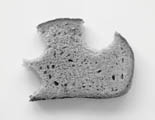
Architectural Education - Marian Zervan
Municipal Library Ostrava, June 16, 2006 | Organizers: Era 21 and Center for New Architecture
response to the discussion
|
> Introductory Lecture > Discussion Record Opinions of the discussants: > Yvette Vašourková > Jakub Kynčl > Ladislav Lábus > Emil Přikryl > František Sedláček > Aleš Student > Jiří Suchomel |
Reactions of the invited personalities: > Mirko Baum > Karel Doležel > Helena Jiskrová > Ivan Koleček > Miroslav Masák > Alois Nový > Petr Pelčák > Marian Zervan |
I carefully studied the discussion about architectural education in the Czech Republic and realized that the way of thinking of the participants as well as their arguments are very similar to the reflections on architecture schools in Slovakia. This is because many Czech architects and urban planners were involved at the inception of architectural educational institutions in the Slovak Republic in 1946, whose beliefs were modernist and functionalist. But it is also conditioned by shared historical milestones, the years 1960 and 1976, struggles for independent architecture schools, and analogous developments after 1989. At that time, nostalgic supporters of the so-called “faps,” that is faculties of architecture and civil engineering, and pseudo-romantic heroes of the battle against the establishment of architectural departments at engineering faculties emerged again. In this morass of discussions about universalism and divergence, about purity and heterogeneity, about national specificity and European-ness, and why not even worldliness, we find ourselves even today. I am not surprised at all as such questions were asked by the creators in the thirties and forties in former Czechoslovakia, who a few years later became teachers, and their convictions about the nature of their scientific methods of creation and now methodologies still haunt us. However, in their universalist minds, a disquieting seed of desire for national style and artistic doubts gnawed, and it is precisely in this strength of modernist conviction and strange national and artistic doubt that I see the origin of the thought schemes of today’s discussions. What is charming about the whole issue is that when it seems that some school might actually undergo a change, the brotherly card is pulled out and it is pointed out how things are in the faculty in Brno or Prague. Conversely, when Brno, or God forbid Prague, is in “trouble,” attention shifts to Bratislava. This paradoxical circle has cursed our architectural education for a long time and is abundantly supported by the honorary presence of Czech or Slovak professors and docents at defenses and in state examination committees.
In the current Czech discussion, I was interested in two replies by Emil Přikryl. The first, referring to van Laan, concerns the necessity and essence, and it did not surprise me at all. It is striking how this religious and strictly scientistic notion of immutable essences and first movers and unambiguous determinism, which shakes hands with religion, survives, particularly in architecture, which, similar to philosophy, had a vast kingdom and sanctification but gradually lost it and now operates in uncertain territories; this is where both philosophy and architecture derive their strength, it just needs to be humbly acknowledged and based on that.
The second statement also did not surprise me, but it is nevertheless from the scheme of doubts, even if not precisely national or artistic now. Emil Přikryl concludes whether architects today actually create architecture. It is a legitimate question and can be expanded to schools of architecture: do architecture schools today educate creators of architecture or architects who do not create architecture anyway? Or can it be turned around, is it necessary for architects to create architecture and should architectural schools only educate creators of architecture? Current events demonstrate that architecture often arises outside the realm of architectural essences and necessities precisely because, as a cultural activity, it needs not mutual persuasion of correctness but the crossing and permanent dialogue of diverse, even very distant opinions and approaches.
However, I do not want to just be a wise commentator and a sovereign critic, so I will say something about my dream of an ideal architecture school, even though all the discussants about dreams and ideals fiercely resist talking and writing about it. Probably precisely because they have long since made it clear regarding ideals and dreams. When I dream of an architecture school, I usually, but not obsessively, imagine a school that stubbornly advocates a concept of architecture that no one accepts, which gives everyone, including the accreditation committee, a headache, but in which everyone speaks freely and of their own accord in a different language. Despite this, it is not a punishment for Babylonian hubris to build essences but rather a "divine" gratitude for humbly seeking one’s own paths and understanding.
doc. PhDr. Marian Zervan, PhD. works at the Academy of Fine Arts in Bratislava.
The English translation is powered by AI tool. Switch to Czech to view the original text source.
0 comments
add comment








